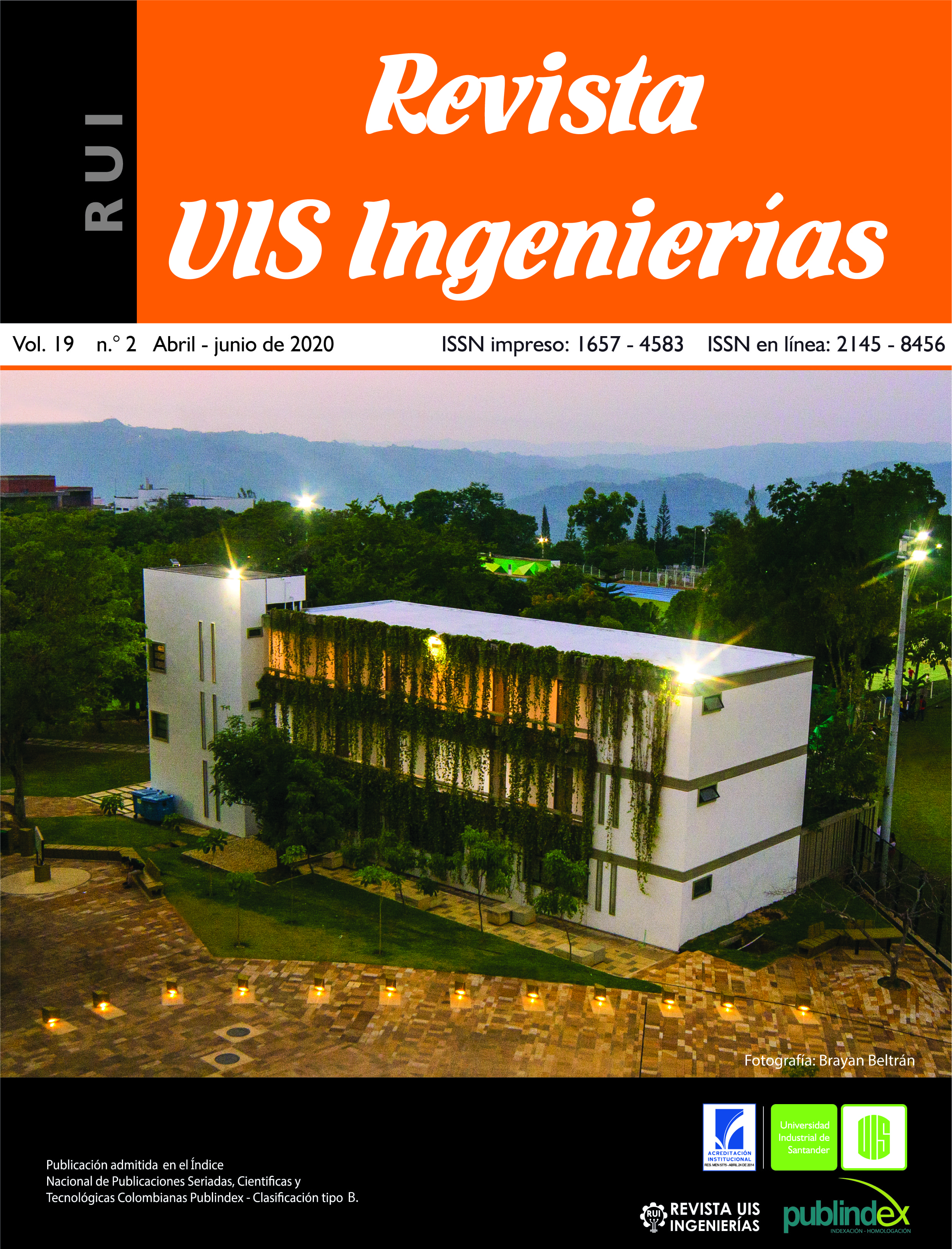Publicado 2020-03-18
Palabras clave
- ala delta,
- desempeño aerodinámico,
- visualización de flujo
Cómo citar
Derechos de autor 2020 Revista UIS Ingenierías

Esta obra está bajo una licencia internacional Creative Commons Atribución-SinDerivadas 4.0.
Resumen
En el presente trabajo se presentan los resultados de la medición experimentales de los coeficientes aerodinámicos de un ala delta, los coeficientes determinados fueron el de sustentación, arrastre y el de momento, adicionalmente se realizó una visualización del comportamiento del fluido que pasa sobre el ala mediante la utilización de humo y de un compuesto liquido de aceite sobre la superficie del ala. Los resultados obtenidos son comparables con modelo teórico de Polhamus y con experimentales presentados en la literatura.
Descargas
Referencias
[2] T. K. D. Hoang, P. K. Nguyen, and Y. Nakamura, "High Swept-Back Delta Wing Flow," Advanced Materials Research, vol. 1016, pp. 377-382, 2014, doi: 10.4028/www.scientific.net/AMR.1016.377
[3] J. Katz and A. Plotkin, Low speed aerodynamics, 2nd ed. (Cambridge aerospace series, no. 13). Cambridge, UK ; New York: Cambridge University Press, 2001, pp. xvi, pp. 613.
[4] S. Saha and B. Majumdar, "Flow Visualization and CFD Simulation on 65° Delta Wing at Subsonic Condition," Procedia Engineering, vol. 38, pp. 3086-3096, 2012/01/01/ 2012, doi: 10.1016/j.proeng.2012.06.359
[5] J. D. Anderson, Fundamentals of aerodynamics, 3rd ed. (McGraw-Hill series in aeronautical and aerospace engineering). Boston: McGraw-Hill, 2001, doi: 10.2514/2.1385
[6] G. Guglieri and F. B. Quagliotti, "Experimental investigation of vortex dynamics on a 65° delta wing in sideslip," The Aeronautical Journal (1968), vol. 101, no. 1003, pp. 111-120, 1997, doi: 10.1017/S0001924000066586
[7] A. Z. Al-Garni, F. Saeed, and A. M. Al-Garni, "Experimental and Numerical Investigation of 65 Degree Delta and 65/40 Degree Double-Delta Wings," Journal of Aircraft, vol. 45, no. 1, pp. 71-76, 2008, doi: 10.2514/1.20243
[8] R. M. Cummings, J. R. Forsythe, S. A. Morton, and K. D. Squires, "Computational challenges in high angle of attack flow prediction," Progress in Aerospace Sciences, vol. 39, no. 5, pp. 369-384, 2003, doi: 10.1016/S0376-0421(03)00041-1
[9] E. C. Polhamus, "A concept of the vortex lift of sharp-edge delta wings based on a leading-edge-suction analogy," Natl. Aeronaut. Sp. Adminstrations, pp. 18, 1966, doi: 10.1088/0143-0807/36/6/065030
[10] R. E. Gordnier and M. R. Visbal, "Compact Difference Scheme Applied to Simulation of Low-Sweep Delta Wing Flow," AIAA Journal, vol. 43, no. 8, pp. 1744-1752, 2005, doi: 10.2514/1.5403
[11] M. Hahn and D. Drikakis, "Implicit Large-Eddy Simulation of Swept-Wing Flow Using High-Resolution Methods," AIAA Journal, vol. 47, no. 3, pp. 618-630, 2009, doi: 10.2514/1.37806
[12] F. M. White, Fluid mechanics, 7th ed. New York, N.Y.: McGraw Hill, 2011, pp. xv, 862 p.
[13] E. C. Polhamus, "Predictions of vortex-lift characteristics by a leading-edge suctionanalogy," Journal of Aircraft, vol. 8, no. 4, pp. 193-199, 1971, doi: 10.2514/3.44254
[14] S. B. Wibowo et al., "An investigation into the use of GAMA water tunnel for visualization of vortex breakdown on the delta wing," AIP Conference Proceedings, vol. 2001, no. 1, p. 050007, 2018/08/16 2018, doi: 10.1063/1.5049998

